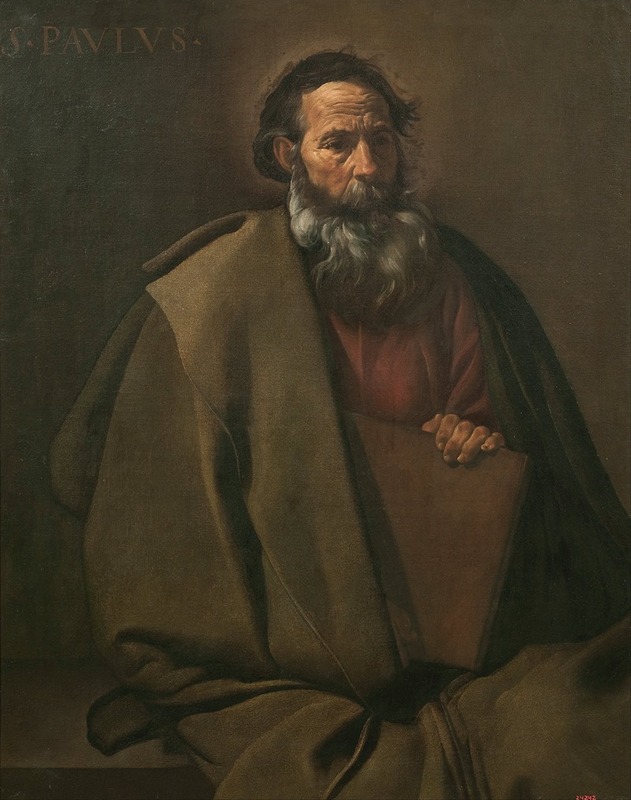
Saint Paul
A hand-painted replica of Diego Velázquez’s masterpiece Saint Paul, meticulously crafted by professional artists to capture the true essence of the original. Each piece is created with museum-quality canvas and rare mineral pigments, carefully painted by experienced artists with delicate brushstrokes and rich, layered colors to perfectly recreate the texture of the original artwork. Unlike machine-printed reproductions, this hand-painted version brings the painting to life, infused with the artist’s emotions and skill in every stroke. Whether for personal collection or home decoration, it instantly elevates the artistic atmosphere of any space.
"Saint Paul" is a painting by the renowned Spanish artist Diego Velázquez, created around 1619. Velázquez, a leading figure of the Spanish Golden Age, is celebrated for his masterful use of realism and his ability to capture the human spirit in his portraits. This particular work is one of his early masterpieces, painted during his formative years in Seville before he moved to Madrid to become the court painter for King Philip IV.
The painting depicts Saint Paul, one of the most influential apostles in the early Christian Church, known for his epistles in the New Testament. Velázquez's portrayal of Saint Paul is characterized by its simplicity and directness, focusing on the psychological depth and humanity of the subject rather than elaborate iconography or background details. This approach is typical of Velázquez's style, emphasizing realism and the inner life of his subjects.
In "Saint Paul," Velázquez employs a restrained palette, using earthy tones and subtle contrasts of light and shadow to create a sense of depth and volume. The apostle is shown in half-length, wearing a simple robe, with his gaze directed outward, engaging the viewer. His expression is contemplative, suggesting introspection and spiritual depth. The use of chiaroscuro, a technique Velázquez mastered, highlights the facial features and hands of Saint Paul, drawing attention to his thoughtful demeanor.
The painting is notable for its lack of overt religious symbolism, which was a departure from the more traditional depictions of saints during that period. Instead, Velázquez focuses on the human aspect of Saint Paul, presenting him as a relatable and introspective figure. This humanistic approach aligns with the broader trends of the Baroque period, where artists sought to evoke emotional responses and connect with viewers on a personal level.
"Saint Paul" is housed in the Museu Nacional d'Art de Catalunya in Barcelona, Spain. It is part of a collection that showcases Velázquez's early works, providing insight into his development as an artist. This painting, along with others from his Seville period, demonstrates his early mastery of portraiture and his ability to convey complex psychological states through subtle visual cues.
Velázquez's influence on Western art is profound, and "Saint Paul" exemplifies the qualities that would define his later works: a commitment to realism, an emphasis on the psychological depth of his subjects, and a skillful use of light and shadow. His work has inspired countless artists, including the likes of Francisco Goya, Édouard Manet, and Pablo Picasso, who admired Velázquez's ability to capture the essence of his subjects with honesty and precision.
In summary, "Saint Paul" by Diego Velázquez is a significant work that reflects the artist's early exploration of portraiture and his commitment to realism. Through his depiction of the apostle, Velázquez offers a timeless portrayal that continues to resonate with audiences, highlighting the enduring power of his artistic vision.


















